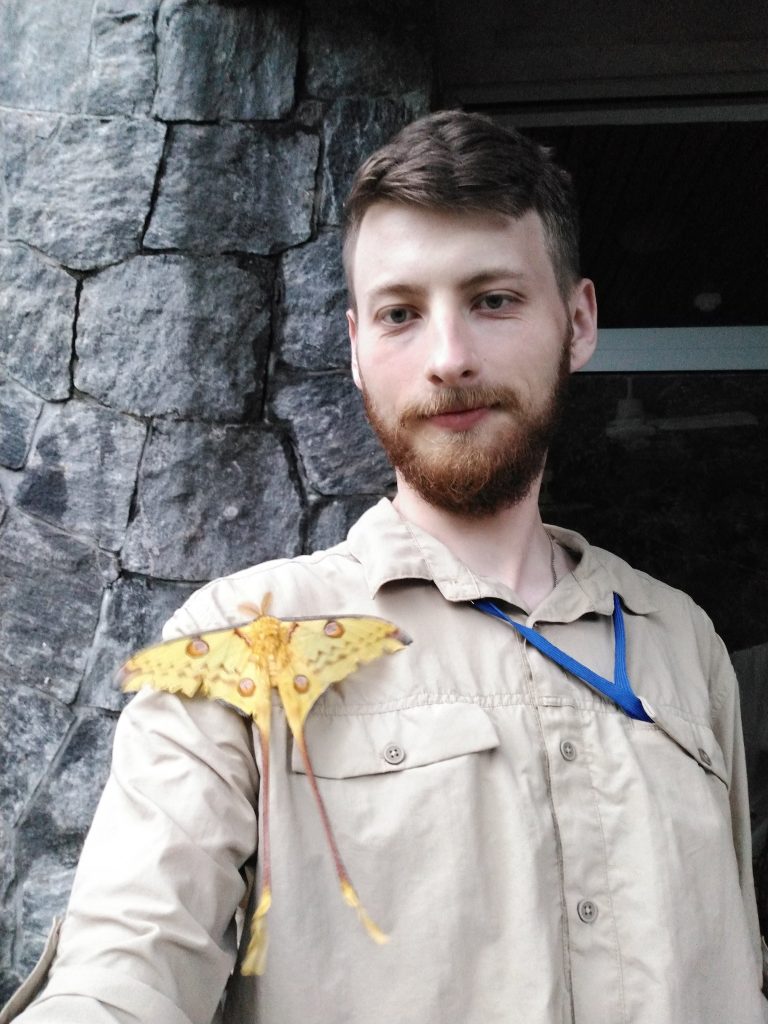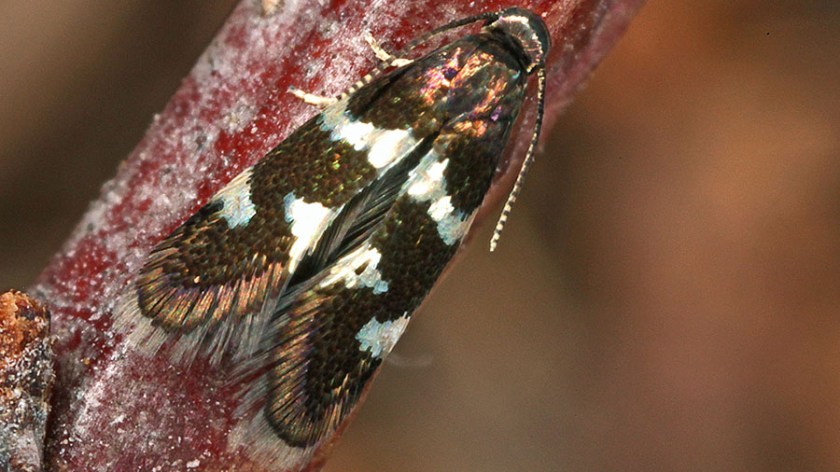Marcin Wiorek joins Nota Lepidopterologica’s editorial team as a co-Editor-in-Chief together with Théo Léger. He was elected to replace David Lees in this capacity on 22 August 2025 at the meeting of the Society for European Lepidopterology (SEL), the society behind the open-access, peer-reviewed Nota Lepidopterologica journal.

“I am truly honoured, but also happy to join the team of Nota Lepidopterologica as a successor of David C. Lees and all previous great Editors. My interest in Lepidoptera focuses on tiger moths (Arctiinae), and different aspects of their systematics, phylogeny, biology and zoogeography. During the past few years, I have been studying the Syntomini of Madagascar, a group that ignited my professional and deep interest in moths, resulting in my recently obtained PhD,” Wiorek said.
The move follows David Lees’ resignation as a co-Editor-in-Chief after eight years of service. Here is a note from him on his time in Nota Lepidopterologica:

“It has been a real privilege to serve as an Editor-in-Chief of the open-access journal Nota Lepidopterologica since 2017 (Issue 40 (2)). Over these eight years I have aimed to keep up the high standards established by my predecessors, the fine lepidopterists Erik van Nieukerken, Jadranka Rota (currently president of SEL, now known as Society for European Lepidopterology) and later Maria Heikkilä, whom I replaced, and to be able to help improve the accessibility, inclusivity (e.g., we welcome submissions outside the EU), and high scientific standards of the journal, working with the team at Pensoft. Plamen Pankov and Boriana Ovcharova have been particularly helpful, aided by their colleagues, as well as Matthias Nuss and Wolfgang Eckweiler in solving printing issues.
“As a co-Editor-in-Chief, I helped edit 11 issues between 2017 and 2025, containing 148 papers and 2,114 pages, occupying some 12 cm of shelf space! During this time, an Impact Factor was introduced (currently 0.7). I trust its quality, accessibility and readership will continue to improve, for example each paper integrates an Altmetric score and Pensoft often offer to promote papers with a wider interest.
New species of clearwing moth from Guyana discovered in Wales
It was discovered after two Welsh specimens were accidentally brought into Europe in a boot bag brought back from a…
A provisional checklist of European butterfly larval foodplants
For the first time, a list of the currently accepted plant names utilised by 471 European butterfly larvae is presented,…
Development anomalies recorded for the first time in a rare
The Menetries’ tiger moth (Arctia menetriesii) is one of the rarest and most poorly studied Palaearctic moth species. Even though…
Carried with the wind: mass migration of Larch Budmoth to
Arctic habitats have fascinated biologists for centuries. Their species-poor insect faunas, however, provide little reward for entomologists – scientists who…
Double trouble: Invasive insect species overlooked as a result of
An invasive leaf-mining moth, feeding on cornelian cherry, has been gradually expanding its distributional range from its native Central Europe…
Portuguese moth’s mystery solved after 22 years
An unknown moth, collected from Portugal 22 years ago, has finally been named and placed in the tree of life…
“My co-Editor-in-Chief Théo Léger will continue his fine work, together with Marcin Wiorek who was elected to replace me at the 24th European Congress of Lepidopterology held in the Czech Republic last month. I know Marcin very well; we have been to the field together in Madagascar on two occasions and I have also had the pleasure to collaborate with him, and can thus vouch for his strong scientific and linguistic abilities as well his broad skillset in Lepidoptera (particularly erebid moth) morphology and strong molecular knowledge and other technical abilities. These will be invaluable in deciding on the increasingly integrated nature of submissions received at Nota Lepidopterologica. He is already well known in the SEL community.
“I will continue as a Senior Curator at the Natural History Museum, London, where I am in charge of microlepidopterans, and look forward to having more time to focus on my own scientific output.“

“I am thrilled to contribute – together with co-Editor-in-Chief Théo Léger – to the further development of the journal and the maintenance of its high professional and editorial level,” added Wiorek. “I believe that my dedication to high publishing standards, implementing modern research methods embedded in the classical taxonomy and systematics of Lepidoptera, will help me work effectively on adding further centimetres of substantive shelf space to the legacy of our journal. I think that my interest in European languages (especially English, crucial to fully enjoy the British humour of my predecessor during joint field trips to Madagascar) can also help me a bit…”
Pensoft and Nota Lepidopterologica thank David for his hard work and dedication and wish him all the best in his future endeavours. We also look forward to working with Marcin on the journal’s development and wish him every success as he takes on this new role.








































